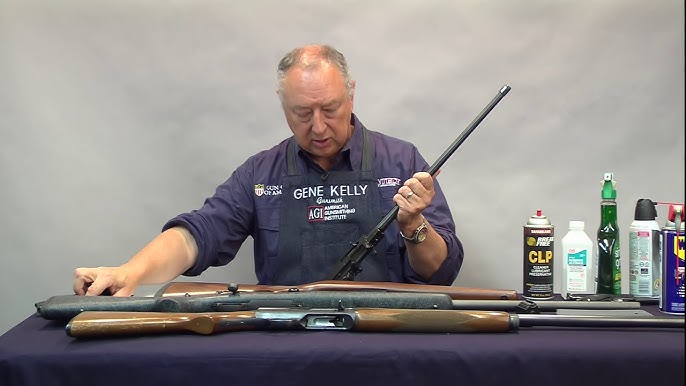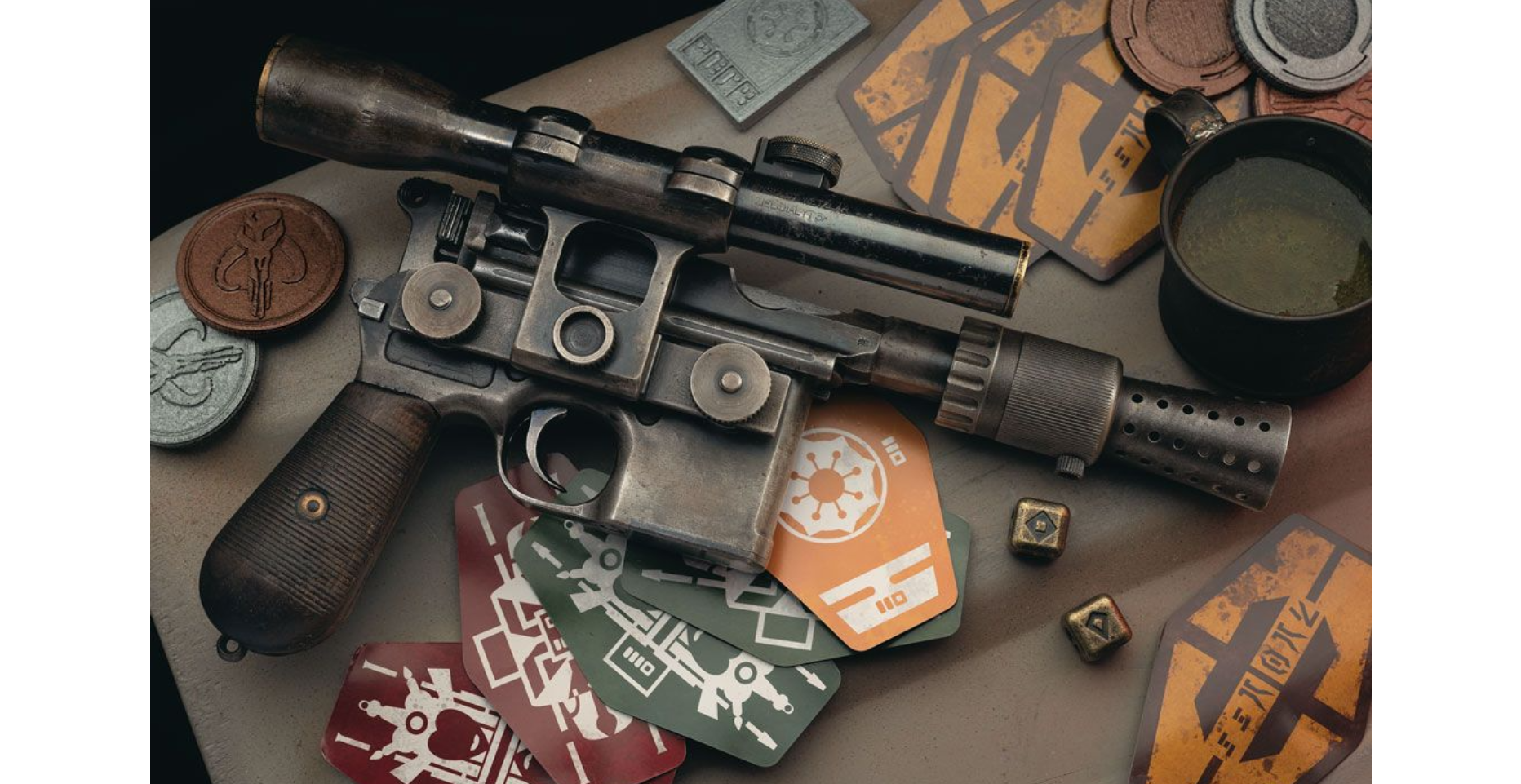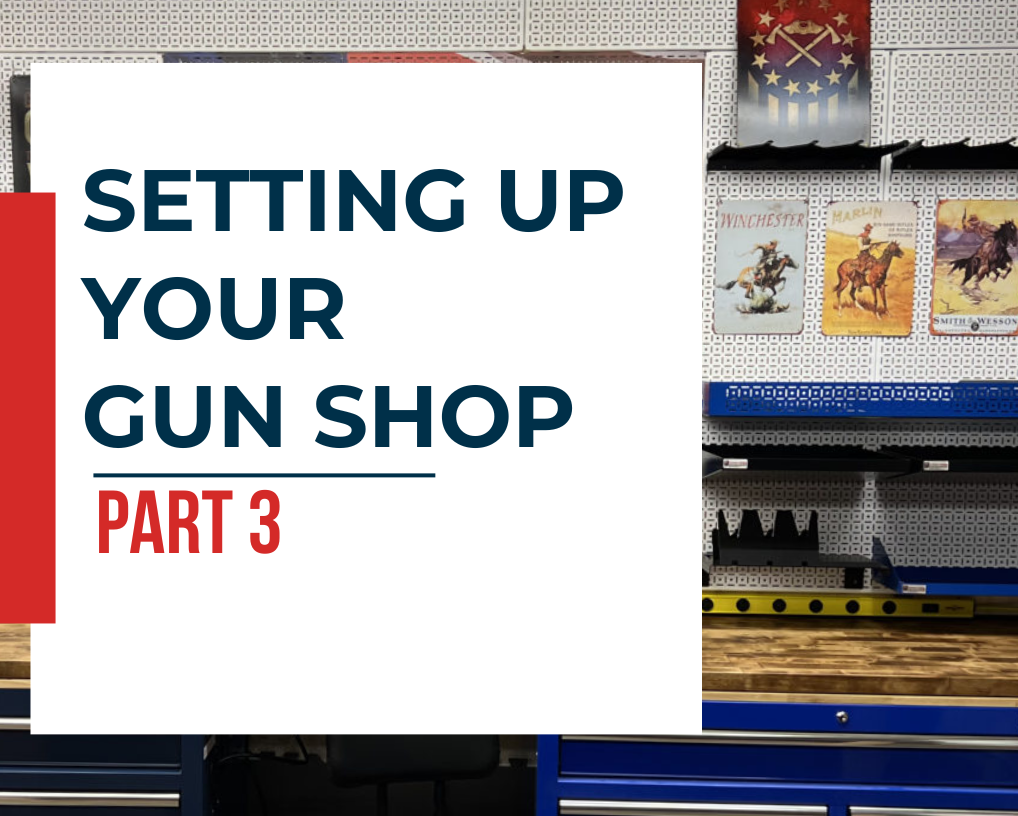AGI President Gene Kelly recently interviewed a husband and wife Gunsmithing team to hear their Gunsmithing Success story!
Gene Kelly:
I want to introduce you just to two gunsmiths, a husband, wife team, and they’re very successful. So I want to introduce you to Gary and Valerie Carter. And let’s hear their story. Gary, Valerie, tell us what’s going on. How’d you get started in all this, and what’s your story?
Gary Carter:
Well, I’m a retired machinist, 30 years machinist, and wanted a hobby when I retired, and have been an avid hunter since six years old. Started out with a .410 single barrel. And dad raised us with guns. And we worked on our guns and cleaned our guns, and took proper care. So I needed something to get me up every morning. So we started with you guys, started our education, and really enjoyed it. And we started out with a 360 square foot shop, and business just kept growing. There’s not many gunsmiths in our area here in North Alabama, where we are.
Gene Kelly:
There are not many gunsmiths in any area, that’s the problem.
Gary Carter:
In fact, I have a lot of people say, “I’m so glad we found you, we want someone to work on our guns.”
Valerie Carter:
Yes.
Gary Carter:
So we started our education, and really liked it. And business just began to really pick up. And one of the things that helped me so much was we got the little plastic card that had the USB port in it, from you, that taught us about the business side. Well, it had the flyer templates in it. And I printed up some flyers and carried them to various gun shops. And first thing you know, we’re building a new building. And we normally keep 25, 30 guns in the shop all the time. And it went from a hobby to six days a week. And Valerie, she was really interested in it, so she…
Valerie Carter:
Now, I’d never been around guns that much. My dad was in the Air Force for 20 years. He was an MP. But he would bring his guns in, put them away. We never were around them. So when we first started talking about this, I’m like, “I don’t know, I’ve never really messed with guns.” But I love it. A lot of fun.
Gary Carter:
Yeah. If we ever have a pump shotgun come in, it’s hers.
Valerie Carter:
That’s what I like to work on. I like to work on pump shotguns.
Gary Carter:
She does the pumps.
Gene Kelly:
Right on. From no guns to “I love guns and I work on guns.” I bet you it blows some people away that you’re the gunsmith.
Gary Carter:
“It does.”
Valerie Carter:
They do. They’re like, “A woman gunsmith?”
Gene Kelly:
We’ve got a number of, actually, across the country.
Valerie Carter:
Well, wonderful.
Gene Kelly:
Maybe we’ll end up starting our own women’s group, separately, just for you guys. You can talk trash about your husbands.
Gary Carter:
Yes. But we absolutely love it. We do.
Valerie Carter:
We do. Yeah, it’s wonderful.
Gene Kelly:
Well, obviously, having a machining background, you already had that kind of dialed in. But what did you learn from AGI that helped you make the jump to being a full-time gunsmith and [crosstalk]-
Gary Carter:
Well, y’all mentioned this so many times, the design and function. In fact, the end of this week, we’ll be taking our shotguns test. And now, you talk about a difficult course. The shotguns is a difficult course, but in seeing that, there were so many things that we ran up on that was causing us a lot of problems, that when we remembered what we were taught on the DVDs…
Valerie Carter:
Go back and watch the DVDs.
Gary Carter:
… go back and watch it again, that’s how you do it. And it became so interesting. It’s putting a puzzle together or solving a mystery. What’s wrong with this one? And the design, first, when we got the design down, and then we began to see … It taught me how to watch little intricate parts as they move, that when you move this, this is supposed to move. And then you do that.
Valerie Carter:
And hearing things, listening for the clicks and little things like that.
Gary Carter:
And the little small things teaches you so much. And we just enjoy it immensely.
Valerie Carter:
Yes.
Gene Kelly:
It’s fun, like you said, to have a reason to get up in the morning, you know?
Gary Carter:
Yes.
Gene Kelly:
We had one guy who is an 80-year-old retired special forces, and he and his wife were very, very close. And she passed away after 60 years of marriage. And he said, “I’m so lost. And then I found this and I’m loving it.” He’s opened a gun range. He’s got all new friends now. People bring him stuff. I mean, it’s a reason, like you said, to get up in the morning. That’s exciting for him!
Gary Carter:
Yes, it is.
Valerie Carter:
We have a lot of hunters in this area, dove season and all this. So we have a lot of people come and bring their guns in, a lot of times, just for cleaning, just to get it ready for dove season. And some of them say, “Well, I have a problem. And can you figure out what’s going on with my gun?” And just get in there, and like you said, like it’s a mystery. Let’s figure out why. Why is this not loading, and what’s happening with this gun?
Gene Kelly:
So, I love that you guys have really jumped into design function repair, because that is the key. You don’t understand it, you can’t fix it. But once you understand those systems and you understand that they’re linear … I mean, for example, we had to memorize sequentially not only the 1911 and all the different major revolvers and stuff like that, along with the auto pistols, like the 1911, and that’s the platform basis, but we had to memorize the Browning A5 sequential movements. So I really encourage every student to internalize that because then, even when you’re not looking at the DVDs, you can mentally, in your mind, look at how the sequence of that gun works. And then when there’s a breakdown, you can go, “Okay, this happens first. That happens second, third. Oh, there it is.” And that’s real gunsmithing. And that’s outstanding.
Gary Carter:
And I have had that happen several times where I know it’s doing this and it’s doing this, but it will not do that. So there’s a breakdown between these two. And when you begin to pinpoint the problem, you can solve the problem. It’s fascinating to me.
Valerie Carter:
AGI, teaches the basics. You got to have the basics or you can’t get it.
Gene Kelly:
Well, what’s interesting to me, and you’re not unusual, is you went through pistolsmithing, started gunsmithing, and ended up with more work than you could almost handle. And we got to almost keep you on track. You also want to go through everything. Now you’re almost through shotguns.
Gary Carter:
Yes.
Gene Kelly:
You’ve got to take the test. It’s a tough test.
Gary Carter:
It is.
Gene Kelly:
But that’s the pinnacle point. Once you get past shotguns, rimfires and centerfire rifles, it just all makes sense so much faster.
Gary Carter:
Yeah. Well, we also had to … one of the things that I’m really looking forward to is when we get into the next section, although I’ve been a machinist for a lot of years, I want to take the machining course to find out … I’m so used to, well, you can just do this and that’ll get you through. I want to know the latest techniques and the new little shortcuts for the gunsmiths and all that. Always room to learn.
Gene Kelly:
Absolutely. I had one student I just talked to and he said, “Boy, other than design function repair, which you’ve got to have,” he said, “if I could only have two other courses of AGI,” he said it would be the welding and machining because, he said, “I’ve been welding for 20 some years at that point.” And he said, “I just realized I was doing most all of it wrong. And I thought I was doing it pretty good.” And now it’s like…you use a little bit of TIG, puts on a little bit of weld, fixes the part, out the door. So looking forward to you guys getting through all the programs, but it’s so fun. Now, you’ve gone from … How long’s it been that you’ve been in the program?
Gary Carter:
I guess just probably…
Valerie Carter:
Over a year.
Gary Carter:
…right at a year.
Valerie Carter:
Something like a year.
Gary Carter:
It’s taking us awhile to get this far because our workload is so heavy. But we will not let our studies go because the workload’s heavy, because they go together. To be able to handle the workload, we’ve got to have the studies in. Yeah.
Gene Kelly:
So in less than a year, you guys have started off with a small shop, which is an adequate-sized shop for a lot of stuff. But now you’ve built a bigger shop. Is it on your own property?
Gary Carter:
It is. And one of the good things about it is it’s on our own property. And we actually connected the two buildings together.
Valerie Carter:
We have a 1,500-square-foot shop, so.
Gene Kelly:
Nice.
Gary Carter:
And our shop has actually paid for our new building as we go. So we’re going to come out it with no overhead.
Gene Kelly:
I love it. And the commute’s pretty good too, isn’t it?
Valerie Carter:
Oh, yeah.
Gary Carter:
It is. It’s very good. In fact, I feel so good, I walk to work every morning.
Gene Kelly:
Yeah. No, that makes life nice. And the crazy thing is you guys did all this during the pandemic.
Valerie Carter:
Yes.
Gary Carter:
We found it so hard to find supplies and stuff. In fact, it’s still hard to find supplies and stuff. But we made it through a very difficult time and things. But really, even through that time, our business didn’t suffer. Our business kept growing. It was just the difficulty of finding some of the supplies and stuff we needed.
Valerie Carter:
We had some repeat customers. If you give them good work, good quality work, they come back, they tell their friends, and that’s how we run. We had business cards made, and just good quality work. And that’s helped us grow a lot, too.
Gene Kelly:
I totally agree with you. And the thing is, there are a lot of parts swappers out there that call themselves gunsmiths. And they don’t really understand D,F,&R. They just keep guessing. And you guys, obviously aren’t guessing. You know what you’re doing. And I’m so excited to see you guys as a team doing this. This has got to be a lot of fun.
Valerie Carter:
It is.
Gene Kelly:
And I don’t know, you probably get competitive, but you don’t throw things at each other in the shop?
Valerie Carter:
We’ve launched a few parts.
Gary Carter:
We’ve launched some parts that we have yet to find.
Gene Kelly:
Oh yeah, you get to go down and do what we call the gunsmith crawl, right?
Valerie Carter:
Exactly.
Gene Kelly:
Crawling around looking for a little spring or part.
Gary Carter:
We feel Bob’s pain when he talks about that. Yes, it’s fascinating. But in fact, I think I still have one spring that’s still traveling.
Gene Kelly:
I launched a part one time, a plunger on an M2 carbine, out of the trigger group. And I looked everywhere in the shop, I mean, everywhere in the shop. About six months later, I was emptying the oil bucket that I had on the mill. And doggone it, that part landed in there. So it happens to all of us.
Gary Carter:
Well-oiled.
Gene Kelly:
It was. It was not rusty. Yeah, but you know, that is something that as you learn … And that’s another reason I encourage you guys to watch the armorer’s courses, and then some of the disassembly, reassemblies, and all the 180-plus disassembly, reassembly courses we got online on the GCA, the Gunsmithing Club of America, because that one little tip on disassembly and reassembly can save you so much time, including when the instructor says, “Hey, and make sure you hold your thumb over this or watch out for that, so you don’t launch the part.”
Gary Carter:
That is priceless information.
Valerie Carter:
Yes.
Gary Carter:
It is, really. Yeah.
Gene Kelly:
And we’ve given you good support, I hope?
Valerie Carter:
Oh, yes.
Gary Carter:
You have, wonderful support. Sue is our advisor. She’s always available when we need her. And all of the staff, we’ve not had any difficulties getting help when we need it. It’s been a very good journey so far. We’re really looking forward to continuing on.
Gene Kelly:
Well, I’m excited for you guys. I do want you to complete all your tests so that I know that you know everything that we’ve got to share, but you’re on an exciting journey. Holy cow. Built the building and paid for it with the gunsmithing you’re doing already. Building a lot of equity that way into your property, having fun together, that’s good. Servicing the community, that’s awesome. And man, I just look forward to checking in with you guys in a year or two, see what you’ve done.
Gary Carter:
Well, we’re so excited. We are. And we appreciate so much the opportunity to be a part of the family you mentioned earlier.
Valerie Carter:
Yes.
Gene Kelly:
Absolutely. That’s how we feel about our students and our members. Well, Gary and Valerie, what a team. And you still like each other after this.
Gary Carter:
Actually, we do. We still enjoy working together.
Valerie Carter:
Yes.
Gene Kelly:
And that’s something a lot of couples don’t get to do, so I congratulate you on that. [crosstalk] do that, being able to do it from home, being able to make good money and servicing the community, it’s an awesome win all the way around. So congratulations.
Valerie Carter:
Thank you.
Gene Kelly:
And look forward to hearing a lot more from you guys. All right?
Gary Carter:
Thank you very much.
Valerie Carter:
Well, thank you.
Gene Kelly:
All right, you take care.
Valerie Carter:
You, too.
Gary Carter:
Thank you.








